New Test for Obviousness of Design Patents Presents Uncertainties and Opportunities
June 10, 2024
By: Darrell L. Wong and Keith J. Wood
- Design patent rights are rendered more uncertain – and potentially more difficult to obtain and enforce – by a recent Federal Circuit case.
- Businesses should consult design patent counsel for how best to navigate the new approach for determining obviousness of designs.
Design rights are becoming increasingly valuable for companies in today’s world, covering everything from the shapes of our mobile phones to the designs of consumer products and apparel to the graphical user interfaces on our screens. Often, companies obtain valuable legal protection for these designs by using the design patent system.
However, a new court decision has recently introduced uncertainty about the patentability and validity of design patents in the United States, making it more important than ever to consult expert counsel on how to protect your designs.
In a recent case, the Federal Circuit overruled the existing test for determining whether a design patent is invalid as obvious and outlined a new approach. The Federal Court decision in LKQ v. GM Global Tech. Operations LLC, No. 2021-2348 (Fed. Cir. May 21, 2024) (“LKQ”) overrules the pre-existing design patent obviousness requirements, known as the Rosen-Durling test, as being improperly rigid. In the Rosen-Durling test, the primary reference used to determine obviousness must be “basically the same” as the challenged design claim, and any secondary references must be “so related” to the primary reference, that features in one would suggest application of those features to the other. What this meant was that Examiner’s rejections could be easily overcome, and challenges to the validity of design patents were difficult to make.
But now, the court institutes a more flexible approach in determining obviousness, following the framework of the factors that are commonly used in analyzing obviousness for utility patents, under cases such as Graham v. John Deere Co. of Kansas City, 383 U.S. 1 (1966), and KSR International Co. v. Teleflex Inc., 550 U.S. 398 (2007). In the new approach of the LKQ design case, the four factors from the Graham case are applied for determining obviousness for design patents. Applying Graham factor one, the primary reference used to determine obviousness for designs will be the most visually similar to the claimed design, and will “typically be in the same field of endeavor as the claimed ornamental design’s article of manufacture, but it need not be, so long as it is analogous art.” The primary reference and any secondary reference must both be either from the same field of endeavor as, or at least analogous art to, the claimed design. Applying Graham factor two, the differences between the prior art designs and the claimed design are determined. Applying Graham factor three, “obviousness of a design patent claim is assessed from the viewpoint of an ordinary designer in the field to which the claimed design pertains.” Applying Graham factor four, secondary considerations such as evidence of commercial success, industry praise and copying may be used to demonstrate nonobviousness.
These four factors to be used for analyzing obviousness of designs follow the same analytical framework to the approach that is commonly used for utility patents, but the specifics of how the factors will be applied in the context of design patent examination and litigation remain very much to be seen. By allowing “flexibility” in considering obviousness, the new test may make it easier for Examiners to reject design patent applications, and for challengers of granted design patents to invalidate design patent claims.
Although the new test introduces some uncertainty to the analysis of obviousness for designs, there are already some guideposts for how it will be applied. In view of the LKQ decision, the Director of the U.S. Patent and Trademark Office has issued new guidelines for design patent Examiners to follow when examining design patent applications. In a memorandum, Director Katherine K. Vidal characterizes the new approach as a “more flexible approach that amounts to a restatement” of the utility patent approach into the context of design patent claims, while “recalibrating” the helpful aspects of the now-superseded Rosen-Durling test that was previously used for designs. In the guidelines, the Examiners are instructed that “if an ordinary designer in the field to which the claimed design pertains would have been motivated to modify the prior art design to create the same overall visual appearance as the claimed design,” the examiner should reject the claim under 35 U.S.C. 103 unless convincing secondary indicia of nonobviousness are of record. The inquiry must “focus on the visual impression of the claimed design as a whole and not on selected individual pieces.” In addition, with regard to considering secondary references, there must be some reason, supported in the record and without using impermissible hindsight, that an ordinary designer in the field would have modified the primary reference with the features from the secondary references to create “the same overall appearance” as the claimed design. Design Examiners are instructed to keep in mind that, generally, the more different the overall appearances of the primary reference versus the secondary reference, the more difficult it will be to establish a motivation to alter the primary prior art design to establish a case of obviousness.
Accordingly, an Examiner may now have more ability to combine prior art references that are from different fields from the claimed design when rejecting a design claim for obviousness.
How can design patent applicants best obtain protection for their designs in this new framework? Among other things, design patent applicants may consider providing evidence from an expert designer in the field to show that a design is not obvious, for example by showing that an ordinary designer in the field would not have modified the primary reference with features from the secondary reference.
Regardless of how the new test for obviousness of design patents develops, consulting with expert design patent counsel and monitoring how this new legal standard is applied will be fruitful for designers.





